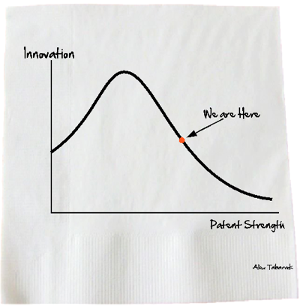The overlap between straightforwardly pathological conditions (in Szasz’s sense) and those that result from social, psychological, or personal factors, or from bad moral choices, suggests that psychiatrists should show discretion in what they regard as genuine illness. The state of ignorance in which psychiatrists now practice, which will probably endure, ensures that they will often be wrong; but no one who has encountered, say, a manic in full flight is likely to doubt that he is in the presence of illness. But nor would it be easy, then, to see so-called factitious disorder, which consists of “falsification of physical or psychological signs and symptoms, or induction of injury or disease, associated with identified deception” in quite the same light: that is, to grant the same status to someone pretending to be ill as to someone genuinely ill.
Yet this is precisely what the DSM-5 does, establishing its authors’ lack of common sense, the quality that psychiatrists, perhaps more than any other kind of doctor, need. The manual’s lack of common sense would be amusing were it not destined to be taken with superstitious seriousness by psychiatrists around the world, as well as by insurers and lawyers.
The section of the volume devoted to personality disorders proves the point. Among the criteria for personality disorders in general are the following:
A: An enduring pattern of inner experience and behavior that deviates markedly from the expectations of the individual’s culture, in fields such as thought, emotion, interpersonal relations and impulse control . . .
B: The enduring pattern is inflexible and pervasive across a broad range of personal and social situations.
C: The enduring pattern leads to clinically significant distress or impairment in social, occupational or other important areas of functioning.
D: The pattern is stable and of long duration.
The DSM-5 then informs us that more than one in seven people have such a lifelong disorder — adding up to 45 million Americans and even more Europeans. These astonishing numbers give the authors not a moment’s pause (any more than does the fact that their own prevalence rates suggest that the average American suffers from more than two psychiatric disorders in any one year). Several undesirable characteristics must be present in an individual for a diagnosis of personality disorder to apply. Considering those characteristics, and that such a significant portion of the Western population supposedly exhibits many of them, either a mass outbreak of human nastiness and inability to deal with everyday life must have occurred, or the whole business of diagnosis must be dubious or even ridiculous.
Here is a random list of some of the characteristics that, in the DSM-5, make up personality disorders of various kinds:
Unjustified suspicions that others are harming, exploiting or deceiving.
Persistently grudge-bearing.
Detachment from social relations and limited expression of emotion.
Behavior or appearance that is odd, eccentric or peculiar.
Deceitfulness.
Persistent irresponsibility.
Indifference to risk to self or others.
Irritability and aggressiveness.
Lack of remorse.
Recurrent suicidal behavior, gestures or threats, or self-mutilation.
Inappropriately intense anger, frequent displays of temper.
Rapidly shifting and shallow expressions of emotion.
Use of physical appearance to draw attention to self.
Self-dramatization, theatricality.
Grandiosity.
Requirement for excessive admiration.
Sense of entitlement.
Interpersonal exploitativeness.
Lack of empathy.
Enviousness of others.
Arrogance and haughtiness.
Unwillingness to become involved with people.
Sense of social ineptitude and inferiority.
Avoidance of risk.
Difficulty in expressing disagreement with others because of fear of disapproval, i.e., pusillanimity.
Feeling of helplessness when alone.
Preoccupation with details, rules, lists, order, organization or schedules.
Excessive devotion to work.
Over-conscientiousness or scrupulousness.
Reluctance to delegate.
Rigidity and stubbornness.
The diagnoses for most of the disorders require at least four of the undesirable characteristics to be present, predominant, and persistent. One is reminded of the King of Brobdingnag’s view of Gulliver’s countrymen: “I cannot but conclude the bulk of your natives to be the most pernicious race of little odious vermin that nature ever suffered to crawl upon the surface of the earth.” Lest anyone object that “only” one in seven people suffers from personality disorders, and that therefore the King of Brobdingnag’s opinion of Western humanity — that it suffers from the “worst effects that avarice, faction, hypocrisy, perfidiousness, cruelty, rage, madness, hatred, envy, lust, malice, and ambition, could produce” — is not relevant, one must add that, for the DSM-5, people with personality disorders are merely the most extreme exemplars of their type. And if only the extremes have four or more undesirable and frequently horrible dominating characteristics, many individuals must have one, two, or even three such characteristics. If the DSM-5 reflects the American Psychiatric Association’s views, then that organization clearly views humanity with Swiftian distaste. Yet its distaste is not that of a disappointed lover (and certainly not expressed with Swift’s genius) but is motivated, one suspects, by the hope of an endless supply of patients. For those with psychiatric disorders need psychiatrists.
 The Australian is reporting that the US Coast Guard’s Polar Star is enroute to assist the Chinese icebreaker Xue Long and the chartered Russian ship Akademik Shokalskiy:
The Australian is reporting that the US Coast Guard’s Polar Star is enroute to assist the Chinese icebreaker Xue Long and the chartered Russian ship Akademik Shokalskiy:


 Leslie Frazier was fired as head coach of the Minnesota Vikings on Monday. Today, he accepted the job as defensive co-ordinator for the
Leslie Frazier was fired as head coach of the Minnesota Vikings on Monday. Today, he accepted the job as defensive co-ordinator for the 

